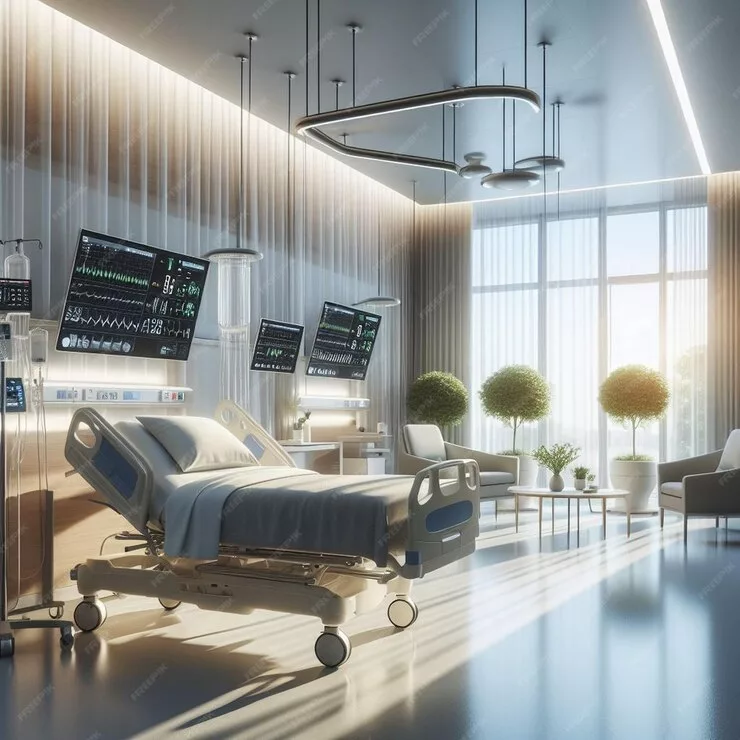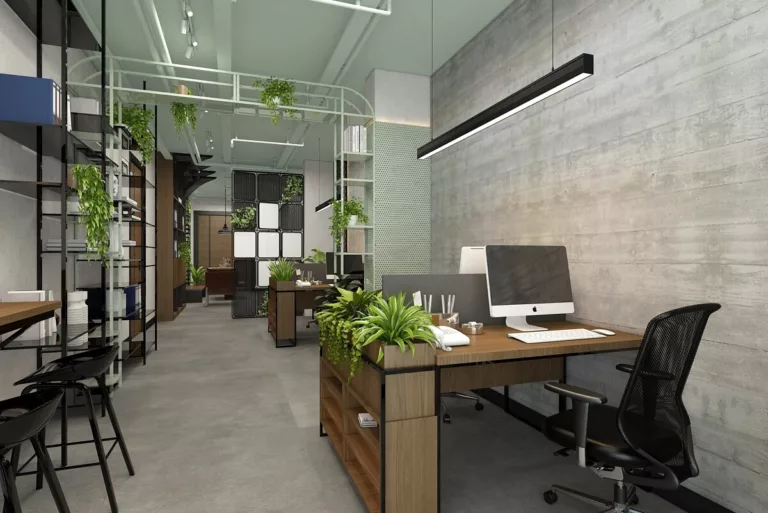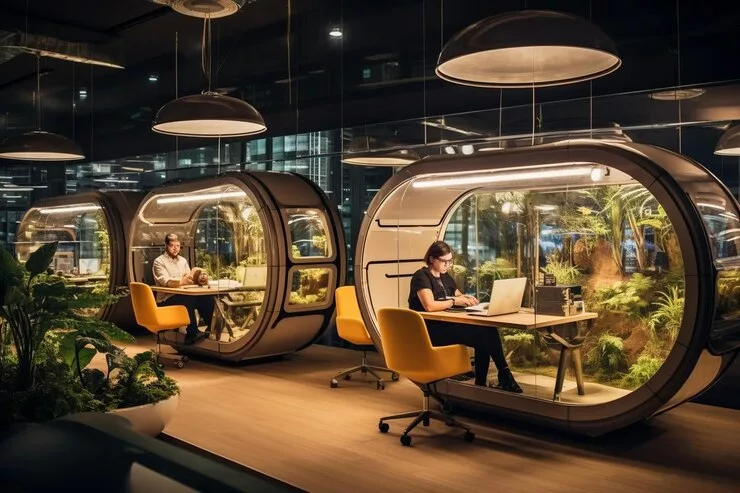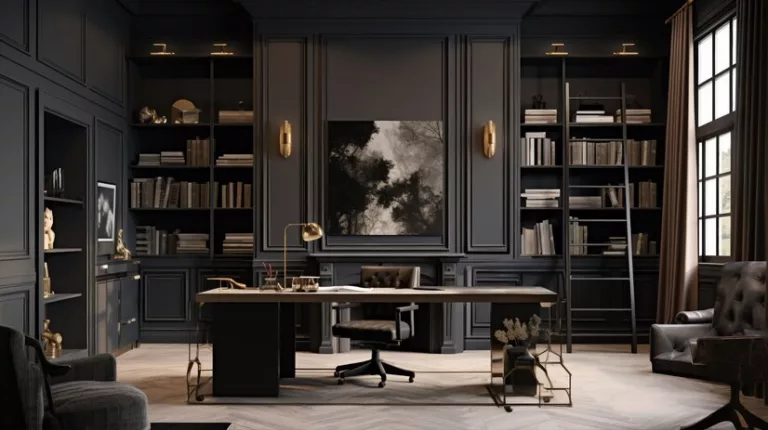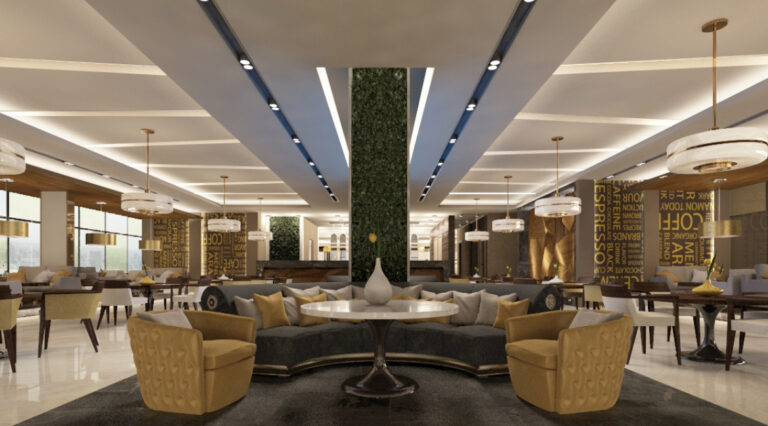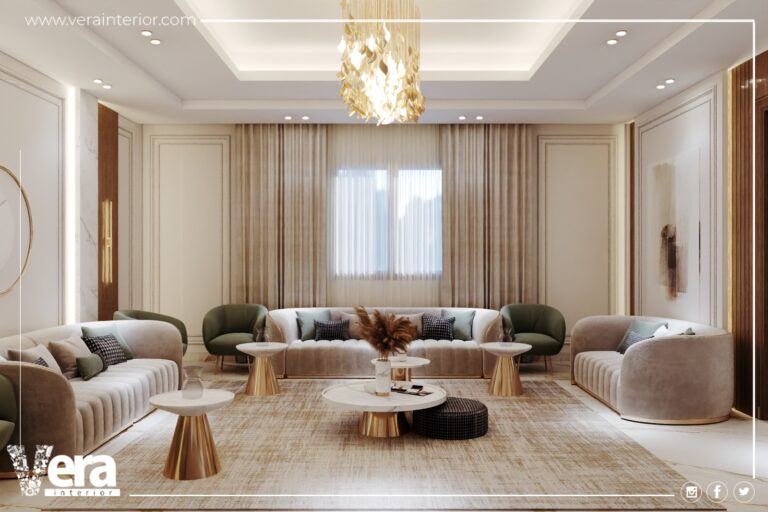عندما تفكر في تصميم داخلي للمستشفيات، فأنت لا تبحث فقط عن تصميم جميل، بل عن تجربة متكاملة تُشعرك بالراحة وتُسهم في تحسين الخدمات الطبية. في وقت أصبحت فيه البيئة المحيطة جزءًا أساسيًا من رحلة العلاج، بات من المهم أن تراعي تفاصيل تصميم داخلي للرعاية الصحية لتحقيق بيئة شفاء متكاملة وآمنة. إليك خمس أفكار تصميم داخلي مبتكرة للمستشفيات يمكنك اعتمادها لتجعل المساحات الطبية أكثر دفئًا وإنسانية وفاعلية تمت تحت إشراف المصمم ضياء جمال.
1. التصميم البيوفيلي: أدخل الطبيعة إلى عالمك الطبي
إذا أردت تحويل بيئة المستشفى إلى مساحة مريحة وداعمة للشفاء، فابدأ باستخدام التصميم البيوفيلي. هذا التوجه يركز على إدخال عناصر الطبيعة في التصميم، مثل النباتات الداخلية، النوافذ الكبيرة التي تسمح بدخول الضوء الطبيعي، والمواد الطبيعية كالخشب والحجر.
بإمكانك استخدام هذا المفهوم في غرف المستشفيات وردهات المستشفيات لبيئة تبعث على الاطمئنان وتخفف التوتر. فالدراسات تشير إلى أن الطبيعة تُحدث فرقًا ملموسًا في تعزيز الحالة النفسية للمريض، وتسريع عملية التعافي، كما تساهم في تقليل معدلات الإجهاد لدى الطاقم الطبي.
تعرف علي : أفضل مكاتب تصميم داخلي للعيادات والمستشفيات
2. المساحات المرنة: جاهزية عالية لكل سيناريو
أنت تعرف أن المستشفى يحتاج دائمًا إلى التكيف مع ظروف متغيرة لذلك من الضروري اعتماد مساحات مرنة في تصميمك. اختر جدرانًا قابلة للتحريك، وأثاثًا سهل التعديل، واستخدم تقنيات الفصل الذكية التي تساعدك على تحويل أي مساحة إلى غرفة استشارة أو علاج في لحظات.
هذا النوع من تصميم مستشفيات حديثة يعزز الأداء اليومي للطاقم الطبي ويُحسّن تدفق العمل، ما ينعكس إيجابيًا على جودة الرعاية الصحية المقدمة. كما أن هذه المساحات تتيح سهولة التوسع أو إعادة التوزيع دون الحاجة إلى تغييرات جذرية.
3. مناطق الانتظار: راحة النفس قبل كل شيء
عندما تدخل منطقة الانتظار غالبًا ما تكون محمّلًا بالتوتر والقلق هنا يأتي دور تصميم مناطق انتظار المستشفيات بطريقة إنسانية ومريحة، اجعل الألوان هادئة، والمقاعد مريحة، ولا تنسَ إدخال لمسات فنية أو موسيقى خفيفة.
خصص ركنًا للأطفال، وآخر للقراءة هذا التنوع يُشعرك بأن وقت الانتظار ليس عبئًا، بل تجربة أكثر ودية وإنسانية. كما يمكنك دمج شاشات معلومات تفاعلية لتسهيل معرفة أوقات الانتظار، أو توفير خدمة الإنترنت لتعزيز الراحة.
تعرف علي سابقة اعمال شركة فيرا في : التصميم الداخلي للمستشفيات والعيادات
4. التكنولوجيا في خدمة الصحة
هل ترغب في مستشفى عصري وفعال؟ لا تتجاهل دور التكنولوجيا في تصميم مستشفيات حديثة. يمكنك دمج الإضاءة الذكية، الشاشات التفاعلية، والتطبيقات التي تساعدك على التنقل أو الوصول للمعلومات الطبية بسهولة.
فكر في إضافة:
- أنظمة إضاءة تتكيف مع وقت اليوم أو حالة المريض.
- شاشات تعليمية داخل الغرف.
- نظام توجيه ذكي يسهل تنقلك داخل المستشفى.
- أنظمة تحكم رقمية للمرضى داخل غرفهم.
هذه الحلول تسهّل حياتك كمريض أو زائر، وتُحسّن تجربة الرعاية من اللحظة الأولى، وتدعم الفريق الطبي في أداء مهامه بكفاءة أكبر.
5. غرف وردهات بتوازن مثالي بين الجمال والوظيفة
عند تصميم غرف المستشفيات أو ردهات المستشفيات، لا بد أن تجمع بين الكفاءة والسهولة والجمال. اختر أثاثًا مريحًا وسهل التنظيف، وحدد مواقع التخزين بذكاء لتقليل الفوضى، راعِ المعايير الصحية دون إغفال البعد الجمالي.
استخدم إضاءة مدروسة توجهك وتبرز المسارات. خصص زوايا للانتظار أو اللقاءات القصيرة، واجعل كل تفصيل يخدم الغرض الطبي والراحة النفسية في آن واحد. احرص على توفير تهوية جيدة، وعزل صوتي فعال، لا سيما في غرف العناية المركزة أو الاستشفاء الطويل.
Read More: 10 Dental Clinic Interior Design Ideas
تصميم داخلي يُشعرك بالطمأنينة
هدفك في أي تصميم داخلي للمستشفيات يجب أن يكون توفير بيئة علاجية تساعد على الشفاء وتدعم الصحة النفسية. لذا احرص على:
- تقليل الضوضاء باستخدام مواد عازلة.
- تعزيز الخصوصية من خلال التخطيط الذكي.
- اختيار مخططات ألوان غرف المستشفيات المهدئة.
- دمج المساحات الخضراء في التصميم العام.
كل تفصيلة من هذه تسهم في خلق بيئة أكثر إنسانية وأقل توترًا، وهو ما يجعل الفرق حقيقيًا في تجربة المريض وعائلته.
خلاصة
اعتماد هذه الأفكار الإبداعية لتصميم داخلي للمستشفيات يعني أنك لا تحسن فقط من الشكل العام، بل ترفع من جودة الرعاية وتُحسن تجربة المريض والعاملين على حد سواء. التصميم الجيد يترك أثرًا طويل الأمد، ويجعل من المستشفى أكثر من مجرد منشأة طبية؛ بل بيئة شفاء متكاملة.
وإذا كنت تبحث عن من يساعدك في تنفيذ هذه الأفكار باحترافية، فإن “فيرا” هي شريكك المثالي. تقدم الشركة خدمات متكاملة في تصميم داخلي للرعاية الصحية، حيث تجمع بين الابتكار والكفاءة والاهتمام بأدق التفاصيل. من تصميم ردهات المستشفيات، إلى تصميم غرف المستشفيات ومناطق الانتظار، توفر لك “فيرا” حلولًا مصممة خصيصًا لتلائم احتياجاتك، وتُحدث فرقًا حقيقيًا في بيئة الرعاية الصحية، وتُسهم في خلق تجربة علاجية أكثر راحة وإنسانية.
تواصل معنا ودعنا نحول أفكارك إلى واقع عن طريق:
البريد الإلكتروني: info@verainterior.com
الجوال: 0552270202
